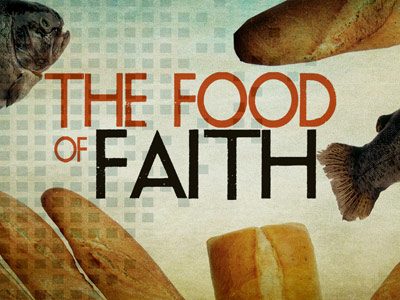-
Third Sunday Of Lent, Year B- Made To Crave
Contributed by Paul Andrew on Feb 1, 2024 (message contributor)
Summary: “What if Jesus made a whip out of cords, knotted them with the Ten Commandments. What would he clear out of you?
There were two kids looking at the Ten Commandments at Sunday school and one of them says, “Seems like there’s a lot more things my parents won’t let me do than these.”
Let’s clean up some misunderstandings of some of the specific commandments--
1.As part of the First Commandment: “You shall not carve idols for yourselves.”
E.g. Egyptian sun temples were ancient temples to the sun god Ra, which was a carved idol and prohibited by the First Commandment. There is a joke that Ra is the patron of Cheerleaders: “RaRaRa!”
The Jewish Temple had both statues and art which is what God wants in Exodus 2, including two carved gold angels (Exodus 25:18). Ancient Jewish underground cemeteries had artwork of menorahs, the shofar or the ram’s horn trumpet, the ark, floral and geometric shapes, depictions of animals and human beings, etc. So, “No; Catholics don’t worship statues!”
Although this First Commandment is against polytheism, an idol can be the almighty dollar or any person. Food can become an idol, not just food offered to idols as Paul says in 1 Cor. 8 but food itself if it’s what we live for; something that controls us in overindulgence.
Regular exercise can be one of the best decisions someone can make but for some, especially maybe the unchurched, exercise is worship.
And, years ago a man wore a rainbow wig and traveled around the country full time and carried a sign saying “John 3:16” and he positioned himself at the best seats at major Sports events where the television cameras were likely to be pointing. He made a good point when he said, “Sports was only a vehicle because to a lot of people, that’s their god.”
An idol is whatever we elevate above God or give to God’s rightful place in our life especially if it keeps one from daily prayer.
We were made to crave, as Author Lisa TerKeurst, says, adding, “What would happen if you started listening to your cravings instead of trying to silence them?”1
As Catholic Christians, we know that only the bread of life in the Eucharist and daily prayer is really going to fill the place in our hearts where idols would want to be.
2.Another misunderstanding is what coveting means in the Ninth and Tenth Commandments: You shall not covet your neighbor’s wife nor your neighbor’s property. Coveting is sinful desire. It is stealthy because these two Commandments have to do with the intentions of the heart and stopping at the root, emotional level, the Catechism says (2534) to prevent desiring another person’s spouse or property.
Breaking these two commandments can lead to other sins such as lust, adultery, theft, and murder. Coveting is when you desire something unlawfully, that lawfully belongs to someone else. If I had his money. Remember, coveting resulted in King David's grievous failing with another man’s wife.
You can remember this two-word mantra against coveting: “limit acquisitiveness.”2
One last thing to clear up is whether anger is a sin—Jesus was non-violent but he did do some civil disobedience in our Gospel passage today.
El Greco’s painting, done in the 1600’s, called the Cleansing of the Temple, depicts not the ancient temple of Jerusalem but a renascence palace where money, power, politics is at the root of the problem that Christ is addressing. This was painted in the counter-reformation time, of the Council of Trent. The Catholic Church is addressing reform through this painting that was commissioned. In the painting, one hand is raised in judgement with a whip against a group of people who represent the moneychangers, while the other hand of Jesus is low, in a gesture of consoling the apostles. El Grego’s style, seen here, is that the people are painted to look like they are swirling, transforming into spirit passing through a gateway to the divine.3
The temple is symbolic of the human person per 1 Corinthians 6:19. What is the shape of the temple of our soul? A little housecleaning?
“What if Jesus made a whip out of cords, knotted them with the Ten Commandments. What would he clear out of you?
Despite El Grego’s painting, Jesus made a whip to drive out the animals —the sheep and cattle— not people. People did get a tongue-lashing, but no people were struck.4
Anger is an emotion which itself is neither good nor evil, the Catechism teaches us in no. 1767. It’s only a sin by reason of excess or defect.
When anger is only managed on a symptom level it remains unresolved and tends to resurface. When that happens, you’re more likely to overreact.5
However, no one enjoys being around a person, who at slightest provocation or none at all, is liable to flare up and shower one with angry words. If you tend to be quick tempered, try to hold back your words by saying an Our Father before speaking. If you fail in this, say the prayer after your outburst but only after you have said I am sorry.6

 Sermon Central
Sermon Central



